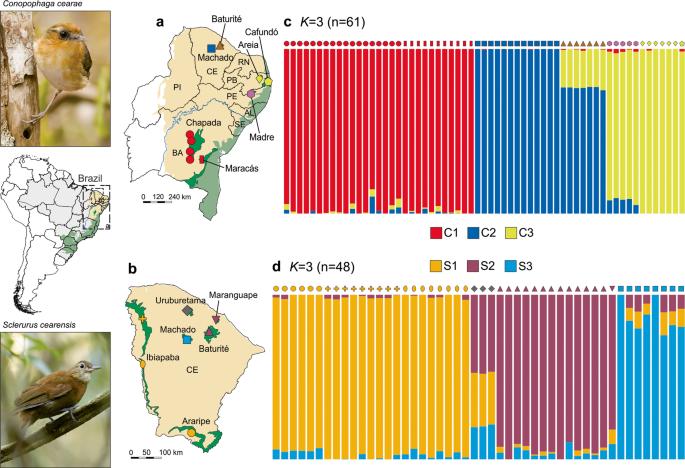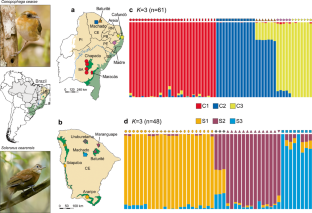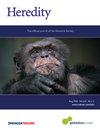Disentangling the contemporary and historical effects of landscape on the population genomic variation of two bird species restricted to the highland forest enclaves of northeastern Brazil
IF 3.1
2区 生物学
Q2 ECOLOGY
引用次数: 0
Abstract
Investigating the impact of landscape features on patterns of genetic variation is crucial to understand spatially dependent evolutionary processes. Here, we assess the population genomic variation of two bird species (Conopophaga cearae and Sclerurus cearensis) through the Caatinga moist forest enclaves in northeastern Brazil. To infer the evolutionary dynamics of bird populations through the Late Quaternary, we used genome-wide polymorphism data obtained from double-digestion restriction-site-associated DNA sequencing (ddRADseq), and integrated population structure analyses, historical demography models, paleodistribution modeling, and landscape genetics analyses. We found the population differentiation among enclaves to be significantly related to the geographic distance and historical resistance across the rugged landscape. The climate changes at the end of the Pleistocene to the Holocene likely triggered synchronic population decline in all enclaves for both species. Our findings revealed that both geographic distance and historical connectivity through highlands are important factors that can explain the current patterns of genetic variation. Our results further suggest that levels of population differentiation and connectivity cannot be explained purely on the basis of contemporary environmental conditions. By combining historical demographic analyses and niche modeling predictions in a historical framework, we provide strong evidence that climate fluctuations of the Quaternary promoted population differentiation and a high degree of temporal synchrony among population size changes in both species.


景观对巴西东北部高地森林飞地两种鸟类种群基因组变异的当代和历史影响。
研究景观特征对遗传变异模式的影响对于理解空间依赖的进化过程至关重要。本文通过巴西东北部Caatinga潮湿森林飞地对Conopophaga ceearae和scclerurus cearensis两种鸟类的种群基因组变异进行了研究。为了推断晚第四纪鸟类种群的进化动态,我们使用了双消化限制性位点相关DNA测序(ddRADseq)获得的全基因组多态性数据,以及综合种群结构分析、历史人口统计学模型、古分布模型和景观遗传学分析。研究发现,飞地间的种群分化与地理距离和历史阻力显著相关。更新世至全新世末期的气候变化可能导致这两个物种在所有飞地的种群数量同步下降。我们的研究结果表明,地理距离和高原的历史连通性是解释当前遗传变异模式的重要因素。我们的研究结果进一步表明,人口分化和连通性的水平不能纯粹基于当代环境条件来解释。通过结合历史人口统计分析和生态位模型预测,我们提供了强有力的证据,表明第四纪气候波动促进了种群分化和种群大小变化的高度时间同步性。
本文章由计算机程序翻译,如有差异,请以英文原文为准。
求助全文
约1分钟内获得全文
求助全文
来源期刊

Heredity
生物-进化生物学
CiteScore
7.50
自引率
2.60%
发文量
84
审稿时长
4-8 weeks
期刊介绍:
Heredity is the official journal of the Genetics Society. It covers a broad range of topics within the field of genetics and therefore papers must address conceptual or applied issues of interest to the journal''s wide readership
 求助内容:
求助内容: 应助结果提醒方式:
应助结果提醒方式:


